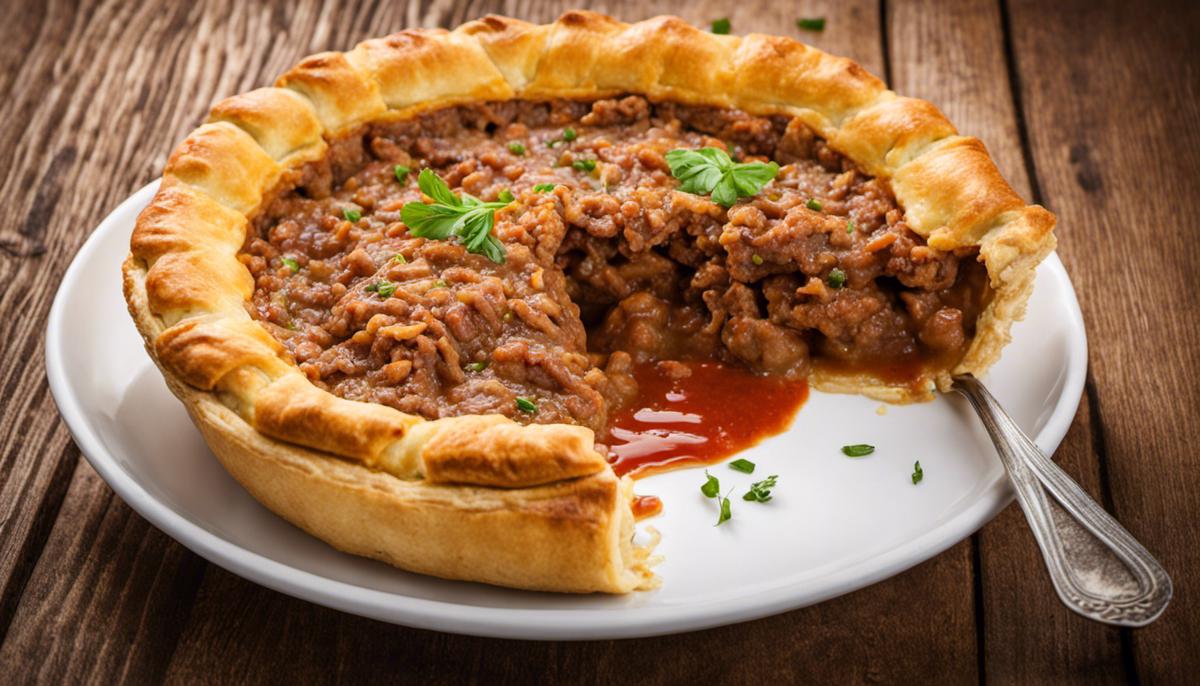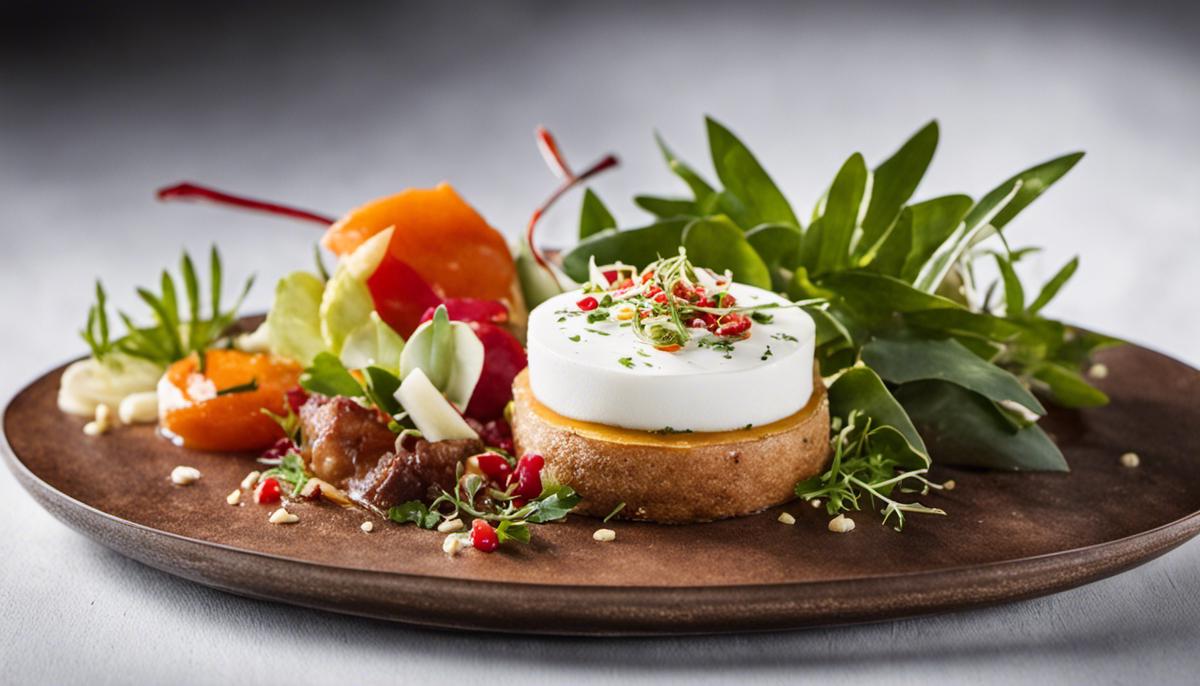Boasting a cornucopia packed with captivating flavors, unique preparations, and rich cultural influences, Australian cuisine has evolved into a vibrant tapestry of taste. With deep-rooted Aboriginal traditions mingled with influences from a colonial past and transformative global trends, Australia’s culinary landscape paints a vivid portrait of a nation’s shared history and its innovative future. Culinary adventurers will be captivated by iconic dishes, from the traditional meat pies and Vegemite sandwiches to delectable lamingtons and the disputably Australian-born pavlova. Our journey into the realm of Australian cuisine doesn’t end here but takes a fascinating turn, courtesy of the profound impacts of multiculturalism that have flavored the country’s gastronomic identity.
History of Australian Cuisine
The Aboriginal Influence on Australia’s National Foods
The traditional food of Australia’s indigenous people, known as bush tucker, forms an integral part of modern Australian cuisine. This includes native ingredients like kangaroo, emu, crocodile, witchetty grubs, Quandong, Kakadu plums, and macadamia nuts. These were hunted, gathered and prepared by the Aboriginal people for over 40,000 years. Many of these foods remain a staple in contemporary bush tucker cuisine, while others are integral components of gourmet dishes in Australian restaurants. Modern Australian chefs continue to innovate with these ingredients, creating fusion recipes that respect the original Aboriginal foods while integrating modern cooking techniques and flavors.
European Influence over the Australian Palette
Australia’s colonial past has had a significant impact on the country’s cuisine. The British and Irish settlers, arriving since the late 18th century, introduced farming methods for crops like wheat and barley, along with livestock rearing techniques for animals such as pigs and cattle. This led to the widespread consumption of Australian products like beef, lamb, and wheat-based foods such as bread and pastries. Seafood is another staple of the Australian diet, influenced by the British’s island nation heritage. Popular dishes from this era include Australia’s world-famous meat pies, fish and chips, sausages rolls, and the iconic pavlova.
Asian Influence Shaping Modern Australian Cuisine
Over the past century, immigration from Asia significantly influenced Australia’s national foods. Chinese immigrants during the gold rush of the mid-19th century, followed by waves of Italian, Greek, Vietnamese, Thai, and Japanese immigrants after World War II, brought their culinary traditions and preferences, which shaped the country’s food culture over time. This has led to the rise of dishes such as Chiko Rolls (inspired by Chinese spring rolls) and modern delicacies like sushi pizza. Today, it’s common to find restaurants serving Asian-Australian fusion dishes, offering a blend of Eastern and European culinary techniques and flavors.
Globalization and the Australian Food Trend
Globalization has further diversified the food scene in Australia, with American fast food chains and European-style cafes populating the nation’s cities alongside traditional Australian eateries. Australian food trends are heavily influenced by global food trends as an increasing number of Australians are open to trying new foods and flavors from various cultures, contributing to the growing multicultural food scene. This trend, coupled with Australia’s emphasis on organic and locally sourced ingredients, has cultivated a dynamic and evolving national cuisine.
The Importance of Barbecue in Australian Cuisine
The barbecue, a popular social pastime, is a significant part of Australia’s national food culture. Stemming from a combination of Aboriginal cooking techniques and a climate suited to outdoor cooking, barbecues have become almost an Australian institution. These events typically feature Australian staples like beef, lamb, and sausages, seafood like shrimp and lobster, as well as native bush foods. In recent years, the Australian barbecue has also adapted to the country’s multicultural food landscape, featuring dishes from various global cuisines.
Contemporary Australian Food Culture
Australia’s present culinary landscape is an intriguing amalgamation of its diverse multicultural society, weaving in native bush foods and worldwide gastronomical influences. As a result, Australia is often dubbed as the globe’s “fusion food capital.” Modern Australian cuisine, or “Mod Oz,” embodies the innovative use of ingredients and cooking methodologies to incorporate global flavors into local dishes. Much like their counterparts around the world, Australian chefs highly prioritize sustainability and locally sourced produce. They champion the country’s rich and diverse produce and seafood in their avant-garde recipes.

Popular Australian Traditional Dishes
A Classic in Australian Cuisine: The Meat Pie
The meat pie, a staple and well-loved dish in Australia, is often referred to as the country’s national dish. The average meat pie is conveniently hand-sized and comes filled with minced or diced meat, gravy and occasionally, vegetables like mushrooms, onions, or peas. This hearty filling is wrapped in a snug, flaky pastry shell, typically accompanied by tomato sauce or ketchup. While traditionally homemade, meat pies are widespread across bakeries, supermarkets, and sporting events. Synonymous with comfort food, meat pies often feature in social gatherings or as quick meals on the go.
Vegemite Sandwiches: The Australian Staple
Vegemite, a concentrated yeast extract, is typically spread on toast or bread and enjoyed as part of breakfast or as a snack. The Vegemite sandwich is a simple dish consisting of buttered slices of bread with a layer of Vegemite spread in between. Aussies grow up eating Vegemite sandwiches, so much so that it’s become a symbol of Australian culture. Despite its unique, strong flavor that can be challenging for non-locals, Vegemite is packed with B vitamins and has powerhouse nutritional benefits.
Dessert Delight: The Lamington
The Lamington is an iconic Australian dessert traditionally made from square pieces of sponge cake or butter cake. It is coated in a layer of chocolate icing, then rolled in desiccated coconut, giving it a distinct appearance and texture. Some variations contain a filling of cream or strawberry jam. It’s a popular choice for fundraising activities known as “lamington drives”, and is a common feature in bakeries and cafes.
Australia’s Sweet Star: The Pavlova
Despite the ongoing debate between Australia and New Zealand over its origin, pavlova remains a symbol of Australian dessert cuisine. Named after the Russian ballerina Anna Pavlova on her tour to Australia in the 1920s, it’s a meringue-based dessert with a crisp crust and a soft, light filling. The top is adorned with whipped cream and fresh fruits such as kiwi, strawberries, and passionfruit. Pavlovas are often served during celebrations and holiday meals, particularly on Christmas.
Anzac Biscuits: Honoring History
Anzac biscuits are a sweet biscuit popular in Australia, originally made by wives of soldiers in World War I to deliver to their loved ones overseas. The recipe typically contains flour, desiccated coconut, oats, sugar, golden syrup, baking soda, boiling water, and butter. The hardy ingredients were chosen to withstand the long travel times without spoiling. They’re now available commercially and are often baked at home around Anzac Day (April 25) to commemorate Australian and New Zealand Army Corps.
Australian dishes, beloved by natives and tourists alike, have risen to a culinary stature of iconic significance in the country. Their distinct flavors, coupled with unique regional ingredients and their respective historical and cultural narratives, represent the diverse culinary heritage of Australia. These native dishes, ever evolving, help shape and define Australia’s food culture and add vibrant hues to the country’s already varied gastronomic scene.

Impact and Influence of Multiculturalism on Australian Cuisine
The Multicultural Influence on Australian Cuisine
As a cultural amalgamation of numerous immigrant populations having varied ethnic backgrounds, Australia showcases a rich diversity that has greatly molded its food culture. The unique combination of indigenous traditions with immigrant culinary influences has spawned a lively national food culture that continues to grow and mature. As such, Australia is defined not just by its endemic palate but also by the food practices brought by its culturally diverse inhabitants.
Italian Influence on Australian Cuisine
Italian immigrants have made an enduring impact on Australian cuisine. The late 1940s and 50s witnessed an influx of Italian immigrants after World War II, introducing Australians to elements of the Mediterranean diet. Today, dishes like pizzas and pastas, gnocchi, and risotto are common in Australian households. Italian delis and cafes sprouted during the post-war era are still popular today and the annual Melbourne Tomato Festival, a celebration of the Italian tradition of preserving tomatoes for use in cooking throughout the year, is an example of the lasting effect Italian culture has had on Australian food practices.
Greek Immigrants and Australian Food Culture
Greek immigrants similarly had a significant influence on the Australian culinary landscape. Souvlaki, moussaka, and dolmades have taken a place in mainstream Australian cuisine after the arrival of the wave of Greek immigrants in the 1950s and 60s. Also, local adaptations of Greek dishes are common, such as the Aussie-style gyro with traditional fillings, like lamb, wrapped in pita bread.
Asian Influence on Australian Food Culture
Australia’s proximity to Asia has also given rise to a strong Asian influence on Australian food habits, especially since the loosening of immigration restrictions in the 1970s. Chinese, Thai, Vietnamese, and Indian food have all found their way into Australia’s national cuisine. Stir-fries, sushi, curries, and dim sum are frequently prepared in Australian homes. Moreover, Asian cooking methods using woks and steamer baskets have been adopted in everyday cooking.
Middle Eastern Migration and Australian Cuisine
Middle-Eastern immigrants have also brought a distinctive flavor to the Australian food scene. Ingredients like tahini, pita bread, falafel, and various spices have become popular in Australian kitchens. Lebanese migration in the 1970s particularly helped popularize ingredients like hummus and baba ganoush, kebabs, and shawarma. Australians continue to embrace the flavors of the Middle East with many adopting the region’s meal structure of small, shareable dishes known as mezze.
Hybrid Foods in Australia
This multicultural blending has also led to the creation of some eclectic hybrid foods. One prime example is the Aussie meat pie floater, which is a British-style meat pie floating in a bowl of pea soup, inspired by Italian minestrone soup. The ‘Chiko roll’, another iconic Australian snack, draws its inspiration from Chinese spring rolls. This savory snack is filled with ingredients like cabbage, barley, carrot, and beef, and has become a staple at local fairs and sporting events.
Multiethnic Influence on Australian BBQ
Classic Australian barbecues have also been transformed by the nation’s cultural diversity. Traditional barbecue items like sausages and steak have given way to foods such as souvlaki from Greece, Italian sausages, Asian-style marinated skewers, and Middle-Eastern inspired falafel and kebabs.
In Australia, the vibrant culinary culture paints a picture of a fascinating confluence of indigenous culinary approaches, and influences from immigrants. The diversity in cooking styles and flavors that emerge from this mix not only sets Australian cuisine apart but also underscore the multicultural fabric of the nation.

Modern Australian Cuisine and Food Sustainability
As emblematic of its multicultural roots, modern Australian cuisine has sensationally transformed over time. Historically, Australian food depended heavily on British culinary staples, a testament to its colonial past. However, it’s seen a dynamic shift in the past few centuries with the infusion of gastronomic elements from Asia, America, and various European countries, curating a flavorsome tapestry of ingredients that form the cornerstone for Australian food culture today.
In the midst of this culinary evolution, one constant belief is the significant use of fresh, high-quality ingredients. Owing to this growing diversity, Australia has experienced a revolution ‘from the paddock to the plate’, where the focus is trained squarely on the journey of ingredients from the farm to the dining arena. This concept shines through in traditional dishes like Barramundi, an indigenous favorite, and Pavlova, a meringue-based dessert that gained popularity in the 20th century.
Moreover, fusion cuisines – like the Mod Oz – are creating a splash, thanks to their inherent synthesis of indigenous ingredients with international cooking methods. The defining feature of such cuisines lies in their pronounced emphasis on locally and regionally available produce.
Indigenous ingredients play a significant role in this evolution, with many traditional Aboriginal foods being adopted into everyday recipes. Bush tucker, or native Australian food, includes ingredients like macadamia nuts, wattleseed, kangaroo meat, barramundi fish, and a variety of fruits and vegetables, such as quandong and warrigal greens.
These ingredients don’t just preserve the culinary history of Australia but also promote the rich biodiversity of the country. Moreover, their incorporation in mainstream recipes is a testament to Australia’s deep respect for its indigenous cultures.
In addition to native ingredients, there’s a growing push for sustainability in the Australian food scene. Chefs and culinary businesses have started to recognize the importance of sustainable practices that not only respect the environment but also contribute to a robust local economy.
Organic farming has gained precedence in Australia due to its commitment to soil health, ecological balance, and sustainable production. Farms producing organic fruits, vegetables, grains, and livestock products have increased in number substantially. The Swan Valley Food and Wine Trail in Western Australia, for instance, consists of many family-owned, organic businesses.
In urban areas, initiatives such as urban farming and rooftop gardens are gathering momentum, as city-dwellers grow their vegetables and herbs. Additionally, restaurants are partnering with local farms to ensure a steady supply of fresh, organically grown products for their customers.
As part of the paddock to plate concept, Australian chefs are dedicating their menus to local, seasonal produce. Ingredients such as Moreton Bay bugs, blue swimmer crabs, marron crayfish, and native fruits and berries often feature in dishes. This hyper-local focus ensures the freshness of food, supports local farmers, and reflects Australia’s vibrant natural resources. It’s a food philosophy that celebrates Australian ingredients and their intrinsic connection to their terroir.
Restaurant trends in Australia continue to mirror the shift towards using native ingredients, sustainability, and the paddock-to-plate ethos. Restaurants like Attica in Melbourne and Orana in Adelaide are setting a high bar by focusing on indigenous ingredients and presenting them in innovative ways.
Another emerging trend seen in Australia’s culinary scene is the shift toward casual, high-quality dining. Gastro pubs, small bars, boutique breweries, and relaxed alfresco eating places have seen a surge in popularity, offering relaxed settings with top-quality food and drinks. The culinary landscape in Australia continues to evolve, carrying forward its traditional roots while embracing modern influences and philosophies.

Over the years, Australian cuisine has cemented its place on the global culinary map as a harmonious blend of tradition, multicultural influences, and innovative contemporary trends. The influences of indigenous food culture grounded in sustainability, combined with the vibrant nuances brought about by multiculturalism, render a unique food narrative that is intrinsically Australian. Modern trends have continued to redefine this national identity, embedding ethical farming and sustainable practices into the culinary canvas. Here, the ‘paddock to plate’ philosophy gracefully converges with the use of indigenous ingredients and restaurant trends. As we delve deeper into this evolving epicurean journey, it becomes increasingly evident that Australian cuisine continues to nourish its roots while sprouting new branches, symbolizing a unique culinary heritage that is as diverse as the nation itself.






